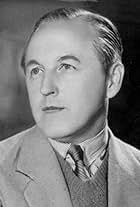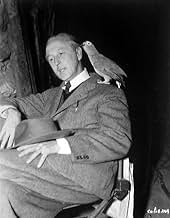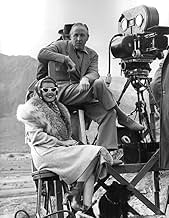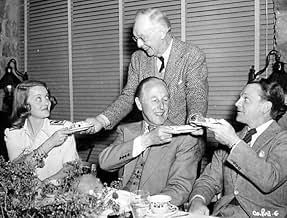William Keighley(1889-1984)
- Director
- Additional Crew
- Actor
William Keighley's professional career spanned three distinct mediums:
the theatre, motion pictures and, finally, radio. Initially trained as
a stage actor and Broadway director, he arrived in Hollywood shortly
after the advent of sound, landing a job with Warner Brothers (where he
spent most of his career) as an assistant director and dialog director
before helming his first film there in 1932. Keighley's gangster films
of the period, such as 'G' Men (1935) and
Bullets or Ballots (1936), are
models of the kind of fast-paced, tightly made, exciting films that
Warner's specialized in--and which kept the cash flowing in during the
studio's devastating losses of the period. Interestingly, although his
career is closely associated with the meteoric ascent of
James Cagney, the two men did not
particularly care for each other, as Cagney was somewhat put off by
what he felt were Keighley's phony European affectations (something the
director acquired during his tenure on Broadway in the early 1920s and
which would carry over into his later career in radio). However, much
like the working relationship between
Errol Flynn and director
Michael Curtiz (although far less
volatile), both Cagney and Keighley did some of their best work
together.
Keighley also directed comedies, the best of which is The Man Who Came to Dinner (1941). He was assigned by Warners to its prestigious Technicolor epic The Adventures of Robin Hood (1938) with Flynn (although initially it was to be with a wildly miscast Cagney in the lead!), but following several weeks of shooting he was replaced by Curtiz (although receiving co-director credit) when studio executives thought that he was taking too long, they weren't satisfied with the film's pace and the costly epic--the most expensive picture in Warners history up to that time--was not going in the direction they thought it should. Keighley's film output declined in the late 1940s and early 1950s, roughly coinciding with his newfound interest as a radio host (his aristocratic voice was ideal for the medium) and his films met with less success, although he did turn out a crackerjack crime drama, The Street with No Name (1948). He retired from directing after his last film, The Master of Ballantrae (1953)--a beautifully shot but somewhat lumbering swashbuckler with an out-of-shape Errol Flynn--and he and his wife, actress Genevieve Tobin, moved to Paris, France, after he left CBS Radio in 1955.
Keighley also directed comedies, the best of which is The Man Who Came to Dinner (1941). He was assigned by Warners to its prestigious Technicolor epic The Adventures of Robin Hood (1938) with Flynn (although initially it was to be with a wildly miscast Cagney in the lead!), but following several weeks of shooting he was replaced by Curtiz (although receiving co-director credit) when studio executives thought that he was taking too long, they weren't satisfied with the film's pace and the costly epic--the most expensive picture in Warners history up to that time--was not going in the direction they thought it should. Keighley's film output declined in the late 1940s and early 1950s, roughly coinciding with his newfound interest as a radio host (his aristocratic voice was ideal for the medium) and his films met with less success, although he did turn out a crackerjack crime drama, The Street with No Name (1948). He retired from directing after his last film, The Master of Ballantrae (1953)--a beautifully shot but somewhat lumbering swashbuckler with an out-of-shape Errol Flynn--and he and his wife, actress Genevieve Tobin, moved to Paris, France, after he left CBS Radio in 1955.



























